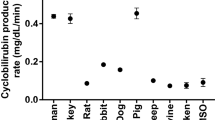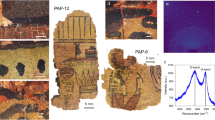Abstract
PREVIOUSLY I have shown1 that the red blood cells of certain animals, for example, guinea pigs, have a high sensitivity to light in contrast to others, for example, man, so that, with the same conditions of light intensity, 98 per cent of guinea pig erythrocytes and only 12 per cent of human erythrocytes are hæmolysed. The light which is responsible for this action is almost exclusively in the visible region.
This is a preview of subscription content, access via your institution
Access options
Subscribe to this journal
Receive 51 print issues and online access
$199.00 per year
only $3.90 per issue
Buy this article
- Purchase on Springer Link
- Instant access to full article PDF
Prices may be subject to local taxes which are calculated during checkout
Similar content being viewed by others
References
Meyerstein, W., J. Physiol., 99, 510 (1941).
Author information
Authors and Affiliations
Rights and permissions
About this article
Cite this article
MEYERSTEIN, W. Photographic Prints produced by Red Blood Cells. Nature 167, 853–854 (1951). https://doi.org/10.1038/167853b0
Issue Date:
DOI: https://doi.org/10.1038/167853b0
Comments
By submitting a comment you agree to abide by our Terms and Community Guidelines. If you find something abusive or that does not comply with our terms or guidelines please flag it as inappropriate.



